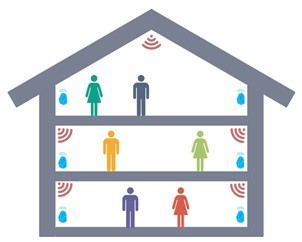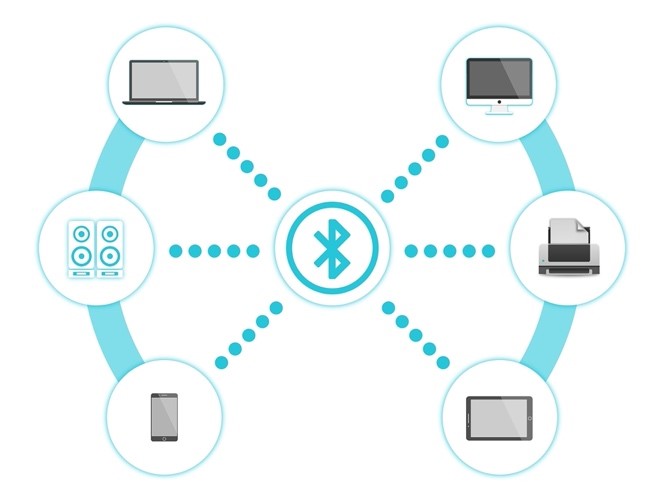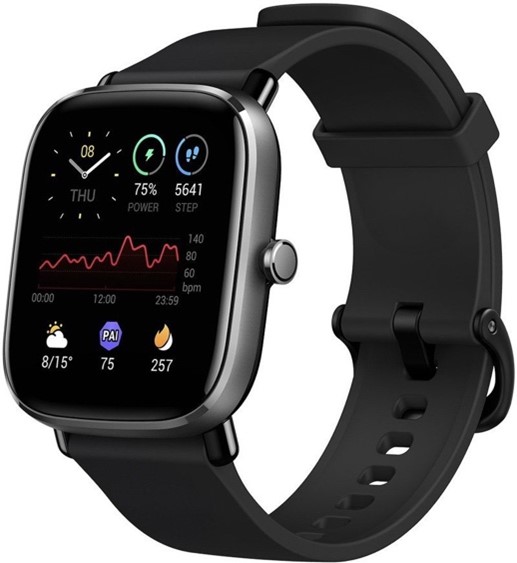Trace: » shape
McMaster Smart Home for Aging-in-PlacE (SHAPE)
The infrastructure is based on a retrofitted residential house to develop and test smart technology for long term health monitoring of older adults living in their own homes.
The motivation behind developing a smart home for health monitoring is centered around two key aspects: (i) cost of care and (ii) quality of care. The public expenditure on health care in Ontario alone surpassed $50 billion in 2014. Our proposed strategy to reduce the growing financial and social pressure is to create a health institution within the home, allowing doctors and other healthcare providers to monitor and analyze the health of their patients remotely using low-cost non-invasive sensor and network technologies that are installed innocuously within the home. The project entails retrofitting the interior of the house to develop and test smart technology that will enable older people to live in their homes longer. The entire project combines a wide variety of sensors and cutting-edge technologies in an innovative manner to monitor the health of seniors. As well as helping older patients to live more safely and independently in their own homes, the research project seeks to relieve the burden on family members and caregivers, and reduce non-emergency visits to the hospital.
Smart IPS Study
The following page outlines all information regarding the how the devices in the study work and how they will be used. The way the devices will be used is described at the end, you may skip ahead to the end of the document if that is all you would like to know about. Below is a summarized list of common questions you may have regarding these devices.
- What is a Smart-Home and how can this technology be used to keep older adults safe?
- What are indoor positioning systems and how do they work (ours is a Bluetooth system)?
- How does Bluetooth technology work?
- What are the Android and Google smartwatches that I will be using in the study?
- How is my data encrypted and kept safe?
- What are the devices in the study and how are they used?
- Sensor Stations
- Smartwatch
- Master Station
Please visit the additional links if you wish to learn more about the study and the different technologies that will be used. If you have any questions, please contact the study team as outlined in the consent form.
1. What is a “Smart home”?
With an increase in the ageing and disabled populations, there is a rise in the need for in-home rehabilitation that understands and meets the needs of elderly users. Individuals can understand the indoor patterns of users struggling with dementia or other health complications, using monitoring systems. In addition, by examining the physical activity and behaviour of older adults, it is possible to detect abnormal events, such as falls, seizures or loss of consciousness. A Smart Home allows clinicians to monitor one’s health and physical activity with the incorporation of various sensors, cameras, and other devices. The data collected can provide insight as to how users live their daily lives while coping with a disease or their response to a certain therapy. Furthermore, Smart Homes are designed to easily integrate various types of devices, including indoor positioning systems (IPS). IPS inherently need different devices to work working together, and Smart Homes are designed to allow for the use of this technology. Overall, Smart Homes allow at-risk individuals to continue to live independently for a longer period.
2. What are indoor positioning systems?
Indoor positioning systems (IPS) are very similar to GPS systems, except they focus on smaller indoor locations as opposed to larger outdoor locations. Indoor positioning systems use the strength of signals sent from tracking devices like smartwatches and tags to accurately track the location of these devices. The IPS being tested in this trial uses Bluetooth signal strength levels to track the locations of smartwatches within the test subject’s household.
3. Tell me more about Bluetooth technology!
Bluetooth is a communication protocol used for data transfer. Many of its applications include wireless headphones, speakers, and car media platforms. There are two types of Bluetooth versions, Regular Bluetooth, and Bluetooth Low Energy (BLE). The devices in this clinical trial use BLE technology. BLE works by establishing a pair between two devices that want to exchange data in the form of packets.
4. Tell me about Smartwatches!
Smartwatches are a type of technology that expand a watch's capability by implementing applications and sensors onto a wearable device. Smartwatches use small touchscreens that can display small-scale applications like fitness tracking, weather reports and video playback. In this clinical trial, smartwatches are used to track the user’s position through their Bluetooth connectivity capabilities. The specific smartwatch used in this trial is an Android-based smartwatch. The specifics of this watch are highlighted in the device description section of this document.
5. How is data encrypted and anonymized?
Data safety and the collection of your personal information are extremely important components of this clinical trial. Throughout this trial, all tracking devices are given unique IDs to distinguish between them. Additionally, each individual home is given a different unique ID. This way all the data obtained from the watches and the homes remains anonymous and unidentifiable based on a specific user. Additionally, all data collected by the system would remain on the master station and stored within its internal storage. Therefore, we would be unable to access any data until the completion of the study.
6. Devices in this study and their use!
The primary devices to be installed in the home are :
A) The Sensor Stations
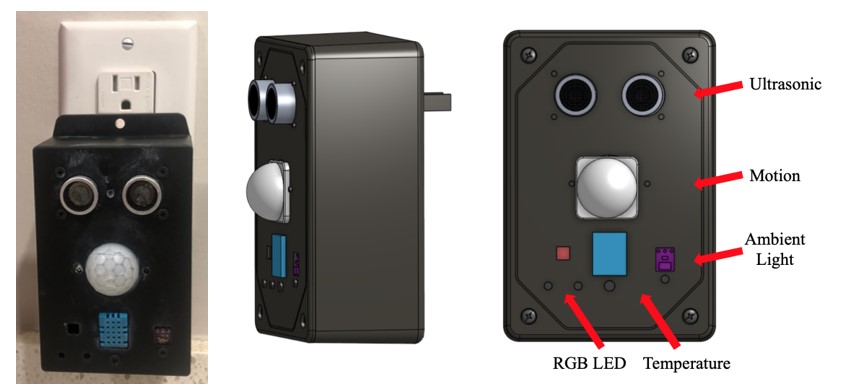 Figure: Sensor Station connected to Outlet (Left), CAD Model of Sensor Station (Right)
Each home will contain one sensor station per room used for tracking. The sensor stations will be connected to a wall outlet within these rooms. No other setup is required! We have done our best to ensure this is a smooth process. The sensors used on these stations are labelled in the diagram above and record certain environmental parameters. The ultrasonic and motion sensors detect if someone is near the box, light and temperature sensors measure the room’s condition and the RGB LED is used as an indicator for the box’s performance.
Figure: Sensor Station connected to Outlet (Left), CAD Model of Sensor Station (Right)
Each home will contain one sensor station per room used for tracking. The sensor stations will be connected to a wall outlet within these rooms. No other setup is required! We have done our best to ensure this is a smooth process. The sensors used on these stations are labelled in the diagram above and record certain environmental parameters. The ultrasonic and motion sensors detect if someone is near the box, light and temperature sensors measure the room’s condition and the RGB LED is used as an indicator for the box’s performance.
B) The Smartwatch
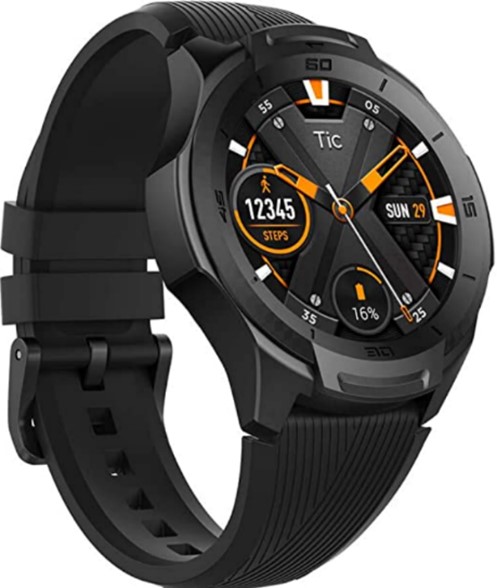 The Ticwatch S2 will be used in this clinical trial. This watch is an Android-based Google smartwatch. You will still be able to see the time of course! So, this essentially functions as a normal watch that you should wear regularly and charge at night and put back on in the morning. If the app closes you will need to swipe down with your finger on the watch's touch screen to find an app called MacM3Wear. Then you touch the icon beside it and the app will begin. If the device is charged regularly the watch will not die and the app will run continuously! But we understand that things happen so just contact us if the watch powers off and you are having trouble restarting the application.
The Ticwatch S2 will be used in this clinical trial. This watch is an Android-based Google smartwatch. You will still be able to see the time of course! So, this essentially functions as a normal watch that you should wear regularly and charge at night and put back on in the morning. If the app closes you will need to swipe down with your finger on the watch's touch screen to find an app called MacM3Wear. Then you touch the icon beside it and the app will begin. If the device is charged regularly the watch will not die and the app will run continuously! But we understand that things happen so just contact us if the watch powers off and you are having trouble restarting the application.
C) Master Station with Raspberry Pi, ESP32 and Ethernet Cord
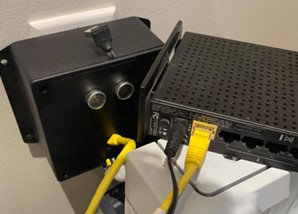 One of the sensor stations will have an ethernet cable coming out the front of it. This box will be labelled as the master station. The ethernet cable needs to be plugged into your router, as shown in the left-hand side image, so the system can have access to the internet. This box is unique in that it contains a Raspberry Pi device with internet access through the ethernet cord along with a master ESP32 that receives data from each sensor station.
One of the sensor stations will have an ethernet cable coming out the front of it. This box will be labelled as the master station. The ethernet cable needs to be plugged into your router, as shown in the left-hand side image, so the system can have access to the internet. This box is unique in that it contains a Raspberry Pi device with internet access through the ethernet cord along with a master ESP32 that receives data from each sensor station.

